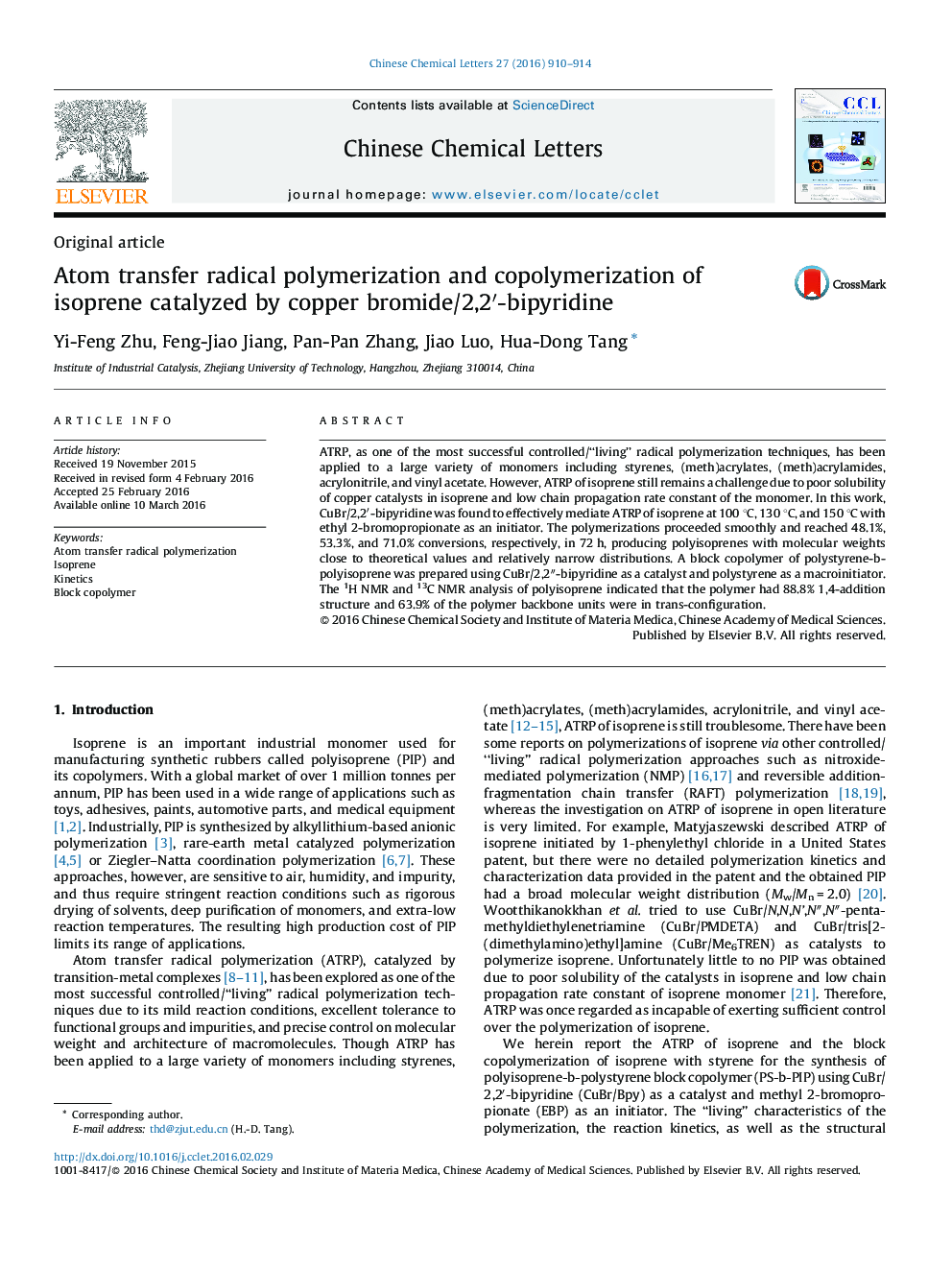| Article ID | Journal | Published Year | Pages | File Type |
|---|---|---|---|---|
| 1254302 | Chinese Chemical Letters | 2016 | 5 Pages |
ATRP, as one of the most successful controlled/“living” radical polymerization techniques, has been applied to a large variety of monomers including styrenes, (meth)acrylates, (meth)acrylamides, acrylonitrile, and vinyl acetate. However, ATRP of isoprene still remains a challenge due to poor solubility of copper catalysts in isoprene and low chain propagation rate constant of the monomer. In this work, CuBr/2,2′-bipyridine was found to effectively mediate ATRP of isoprene at 100 °C, 130 °C, and 150 °C with ethyl 2-bromopropionate as an initiator. The polymerizations proceeded smoothly and reached 48.1%, 53.3%, and 71.0% conversions, respectively, in 72 h, producing polyisoprenes with molecular weights close to theoretical values and relatively narrow distributions. A block copolymer of polystyrene-b-polyisoprene was prepared using CuBr/2,2″-bipyridine as a catalyst and polystyrene as a macroinitiator. The 1H NMR and 13C NMR analysis of polyisoprene indicated that the polymer had 88.8% 1,4-addition structure and 63.9% of the polymer backbone units were in trans-configuration.
Graphical abstractATRP of isoprene has been achieved using CuBr/2,2′-bipyridine as a catalyst and ethyl 2-bromopropionate as an initiator. The polymerization proceeded smoothly and reached 71.0% conversion in 72 h at 150 ̊C.Figure optionsDownload full-size imageDownload as PowerPoint slide
